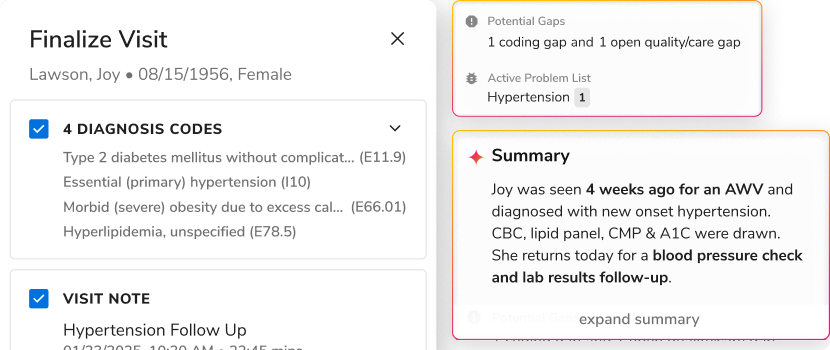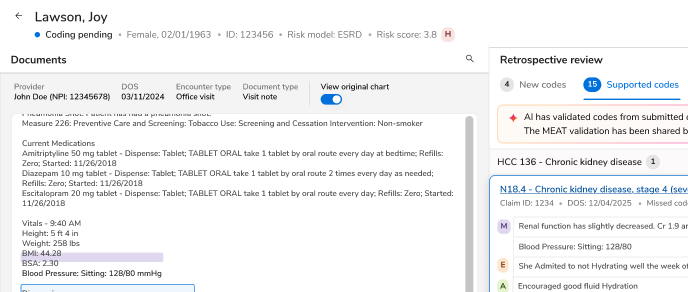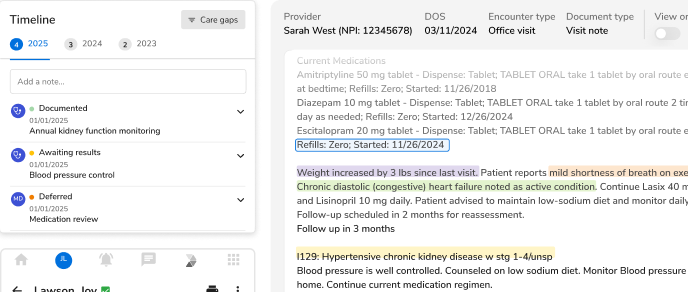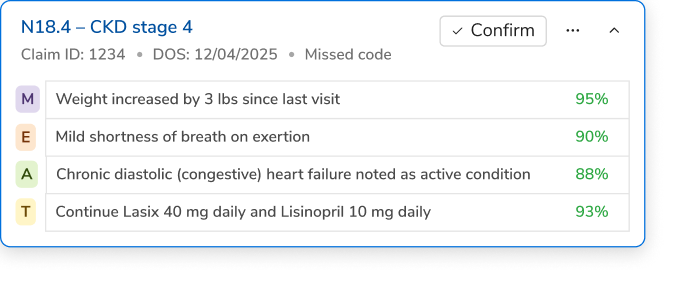Clinical Documentation Improvement: The Building Blocks of Modern Healthcare

“Primum non nocere”ー First do no harm.
Medical students everywhere take this oath as an important step in becoming a doctor. Call it a part of the Hippocratic Oath or a line out of “Of the Epidemics,” the meaning is explicit: that physicians will balance all interests and let no harm come to their patients. Patients should be safe in hands of a physician and by extension, hospitals.
So it is nothing but a chilling reality when over 250,000 patients lose their lives due to medical errors every year. A study by John Hopkins University School of Medicine calls medical errors the third leading cause of death in the United States- one which is often overlooked in annual mortality statistics. From diagnostic errors and mix-ups in records to missing data and delayed information- many causes of medical errors exist in healthcare, and one of the main reasons is inaccurate documentation.
Consider another, macro-level scenario: In a sector that has gone over the $3 trillion mark in expenditure, healthcare organizations end up leaving $1.17 billion on the table, just because of errors in coding. The money that could have been claimed and used to improve outcomes for the population is forfeited because of errors stemming out of poor documentation. As healthcare shifts to an efficient, quality-first structure, clinical documentation and coding have to become its brick-and-mortar foundation.
Healthcare quality stems from clinical documentation
From providing quality care to patients and ensuring their safety, to thriving in an era of value-based reimbursement, clinical documentation improvement has become an integral part of a hospital’s framework. Helping physicians log their diagnoses and treatments with accuracy, precision, and completeness has become an essential skill in reflecting the scope of services provided to the patient and creating their appropriate clinical picture.
Even one missing data point can put a patient’s life at stake. Take for instance- a Minnesota patient underwent a bilateral mastectomy for cancer, only to discover post surgery that there was, in fact, a mix-up with the biopsy report and she had not had cancer at all!
Good documentation serves the extremely important job of facilitating the right care at the right time. A provider’s ability to understand, tell, and show the entire patient story depends on the data available to them and its integrity. With the ability to exchange patient data all over the network, care teams can collaborate and create true patient-centric care programs, powered by accurate and detailed patient records.
Taking care of underpayments and overpayments
In addition to its impact on patient care, proper documentation is also tied to cost accuracy and efficiency under value-based reimbursements. According to a Black Book survey, nearly 90% of the healthcare provider organizations that leveraged clinical documentation earned at least $1.5 million more in reimbursements. And 85% of them revealed that enhancing case mix index by clinical documentation improvement was a key factor.
Case mix indices for hospitals are a measure of the average severity of cases treated within the network. A higher case mix for a hospital would mean that they are treating more complex cases, and should receive higher reimbursement. As a result, understanding the patient’s overall state is essential for success in value-based contracts as many of the quality and safety measures that impact payments are risk-stratified. So if an organization is not able to capture episodes accurately, that would impact their case mix and mortality index, and result in underpayment or overpayment.
Addressing physician burnout
An important priority to keep in mind is to manage the burden on physicians. On an average, doctors spend a little over 18 minutes on clinical documentation on their EHRs, compared to 16.5 minutes of face-to-face interaction time with patients. Changing documentation takes its toll on physicians and their efficiencies, resulting in more burned out physicians than ever.
With an explosion in the number of healthcare data systems, physicians are just overwhelmed with the amount of data around them. On top of that, not all of this data is valuable. Physicians end up scouring through EHRs, querying for information, and keying in data for quality metrics half their time- which is again a challenge as most of the information around them is fragmented. Whether automated or assisted, clinical documentation process should be something that reduces the strain on physicians and saves them from merely checking the boxes.
You may also like: Why are Primary Care Practices in the US in Trouble?
Fueling clinical documentation improvement with the power of data
Establishing an effective clinical documentation improvement program is no easy endeavor, and neither is sustaining it. Clinical documentation relies heavily on the availability of integrated, quality data and that is the first step where healthcare organizations should begin.
The organizations need to capture healthcare data from different avenues, including clinical, claims, billings, ADT feeds, and more to create a holistic picture of the population health. This integrated data should be thoroughly checked for missing or wrong information, and put together on a unified healthcare data platform that connects different systems and settings. Providing care teams with a complete record will be instrumental in identifying missed codes or wrong codes by mapping the patient care journey across the continuum. Once the patients are linked with their records and the gaps in their care have been identified, providers can prioritize the high-risk patients and work on addressing their needs.
More importantly, at the heart of a clinical documentation improvement program lies efficiency. Clinical documentation would be of little importance if it takes up a good deal of providers’ time. Automated workflows that list the patients with missed or wrong codes and are available to the provider as the patients visit could be a game-changer. With point-of-care support, physicians would be able to identify the gaps, codes that were dropped from prior records, and suggestions for more specific codes to improve reimbursements. The last piece should be analytics- where providers can track trends, highlight the blind spots, and then leverage those action-ready insights to drive outcomes. Above all, data from all over the network has to be fluid, tied together, and available at the right time.
You may also like: The Ever-Growing Impact Of Clinical Documentation Improvement
Leading patient care with accuracy
As the healthcare landscape continues to shift, the importance of clinical documentation will only increase. And with that, we have to realize that clinical documentation is much more than correcting the codes or filling in the ones that will “pay.” It’s much more than checking the boxes or reviewing the charts. Clinical documentation has to become a true reflection of the patient care that was provided and how can providers deliver the best possible care while moving the patient efficiently along the continuum. The entire essence of this transitioning healthcare is to provide patients efficient and quality care, and clinical documentation improvement is the foundation of this new, redefined structure.
To know more about how clinical documentation can be improved, get a demo.
For more updates, subscribe.
Join us at the AHIP Institute and Expo 2018 in San Diego, California from June 20 to June 22 at Kiosk #4, and learn how the leading healthcare data platform can assist you in driving efficiency in healthcare with the power of data.

.png)





.png)









.svg)
.svg)

.svg)

